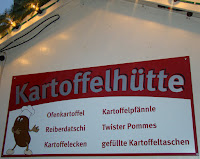
As I did not have much work, I felt that the day was not so fruitful. Actually, I got bored. So, in order to make myself happy, I decided to prepare myself this tasty gift. But I was tired. So, naturally this recipe is simple, easy and quick to cook.
Ingredients:
(Two servings)
4 chicken drumsticks
400 gm rice (you can use lesser quantity depending on your eating habit)
One medium sized potato – cut as shown in the final product
Onion 100 gm
Green chilli – chopped
Turmeric
Pepper – 1 teaspoon
Ginger powder – half a teaspoon
Cumin powder – half a teaspoon
Garlic – four/five cloves, crushed
Tomato – one small
Salt
Sugar – half a teaspoon (optional)
Cumin seeds – a pinch
Ghee (you are free to use olive- /ground nut- / sun flower oil. Please don’t use mustard- or coconut oil! Bongs and Mallus! Please excuse me!)
Cashew nut, cardamom, bay leaves – optional
If you like it a little too spicy, you can add red chilly powder too.
1) Marinade the chicken with salt, turmeric powder, ginger powder, chilly powder (if you at all use it)
2) Pour half a table spoon ghee in to the pressure cooker
3) Add potatoes
4) As soon as the potatoes start turning golden, add bay leaves and cumin seeds. Wait for a few seconds.
5) Now add chopped onions, garlic and green chilly.
6) As the onion turns golden, add the drumsticks.
7) Cook the drumsticks for some time; stir from time to time and make sure that the flame is not very high/ big otherwise it will burn the onion and other micro elements.
8) While the chicken getting cooked, wash it (But if you think you should soak it for, say half an hour, depending on the rice, then do that earlier.)
9) After the chicken is half cooked and chopped tomato. Stir a little and let the tomato get cooked.
10) Add rice. Now, since rice cooks much faster than chicken you need to know the rice well and understand when to add the rice to ensure the both get cooked together and the rice does not get overcooked. The rice I used needed four whistles to cook.
11) Add water.
12) I turned off the gas burner after four whistles.
13) Let the thing stand for a few minutes and then only open the pressure cooker.
14) Now it is ready to serve. Enjoy your meal.




































